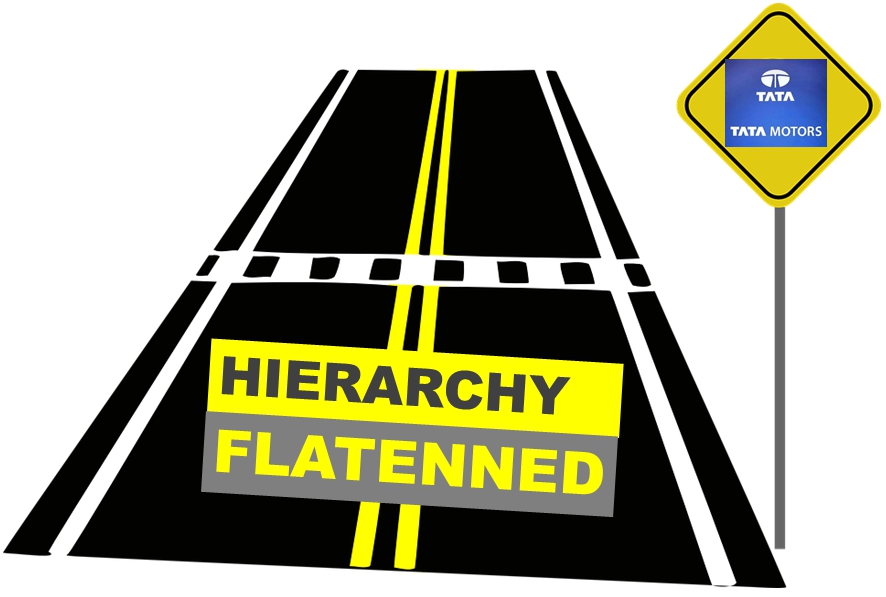To create a work environment where people seek development in its real terms and not settle for artificial growth, Tata Motors has just done away with the age-old system of fancy designations.
Career growth and development in our country is often mistaken for change in designations and levels or bands, irrespective of whether the role has changed. Although that may look like growth, up the corporate ladder, that is not development in its true sense. It not only impacts how people perceive and work towards growth in their professional journeys, it also defines the overall work culture in an organisation.
With an aim to create a work environment where people seek development in its real terms and not settle for artificial growth, Tata Motors, as part of its larger transformational journey, has just done away with the age-old system of fancy designations. People fall into the trap of fancy designations and expect a promotion or change in designation every two to three years, irrespective of any real development in their roles or responsibilities.

“We wanted to rid people of this artificial growth and provide them an environment that motivates them to seek developmental growth ensuring there is more focus on holistic learning and experience rather than just change in designations,” Gajendra Chandel, chief human resources officer, Tata Motors, explains.
The move is part of a larger transformational programme that the company has been working on since last year. Relooking its operating strategy with the next three to five years in mind, Tata Motors decided to rework its structure. Chandel shares that the structure in an organisation significantly influences its culture, and to have the right kind of performance culture, it was first important to change the mindsets people carry to work.
A transformation at this scale takes meticulous planning and a step-by-step expansive execution, which began with a review of the organisational structure which was originally quite tall and hierarchy heavy and needed change. To restructure the hierarchies, the company administered assessment centres and identified its top 500 leaders, out of which top 100 leaders underwent a leader on-boarding exercise into the new organisation structure, further cascading the details to each of their management teams in a three-day off-site programme.
This staffing exercise at Tata Motors was a part of defining and embedding the new hierarchical structure that reduced the number of reporting layers from 14 to five. The restructuring was also combined with benchmarking the compensation with market standards.
The move is part of a larger transformational programme that the company has been working on since last year. Relooking its operating strategy with the next three to five years in mind, Tata Motors decided to rework its structure. Chandel shares that the structure in an organisation significantly influences its culture, and to have the right kind of performance culture, it was first important to change the mindsets people carry to work.
Followed by staffing and hierarchy review came the decision to drop designations. As Chandel says, “We did not want our people to simply believe in chimney growth rather look beyond and seek cross-functional exposure and real growth that is both vertical and horizontal.” As part of the new structure, Chandel elaborates that people can switch functions, which enriches them and they look forward to such exposure and learning opportunities.
Chandel shares that an individual looking to grow from managerial level 5 to 4 or to level 3, will have to build competencies across the value chain and not just in their own vertical. He explains that this provides a multi-dimensional experience to people, which is essential for a professional to effectively move up the ladder and extremely crucial for senior management professionals.
In a flat structure and an environment where building capacities and competencies drives people’s growth, designations such as vice-president, general manager, regional sales manager, and area manager will have to cease to exist. Employees will now be known by their function/responsibility — for instance, ‘Sales – Medium and Heavy Commercial Vehicles’. In addition, someone heading a team will simply be called ‘Head’ followed by the function, across its plants and offices.
The Executive Committee, comprising Guenter Butschek, managing director, and his leadership team of about 10 people, will be the only ones to continue with their designations in the 10,000 plus workforce at Tata Motors.
The change however did not come easy for everyone in the organisation as a few of the senior long-time professionals felt that taking away the differentiation in age or years of service in the organisation and putting youngsters on the same pedestal hasn’t been fair to them. On the other hand, “Millennials or the youngsters and the high performers are rejoicing over the new structure and are happy and motivated to grow across levels and functions,” Chandel admits.
Chandel agrees that it is not new to have junked designations and have a flat organisational structure, as it is a common practice overseas now. However, in India, it may be the first time an organisation has implemented such a large-scale organisational transformation programme. This certainly sets a benchmark for organisations looking at new beginnings for a futuristic work culture.




2 Comments
This seems to be a good move for Tata Motors which had a traditional hierarchy. However such drastic reduction in structure has happened in the past decades with good outcome for the entire organization. ABB comes to my mind immediately where under the leadership of Mr. Percy Barnevik, they did similar exercise and ABB world wide and ABB India in particular achieved great results overall. In fact this was taken as a case study at HBS during 1990s.
I have led this Organisation transformation of moving from fancy designaion to role centric organisation structure in my past organisation Allied Blenders & Distillers (ABD) long ago in 2011 which certainly improved the Talent attraction and performance driven culture along with accountability.